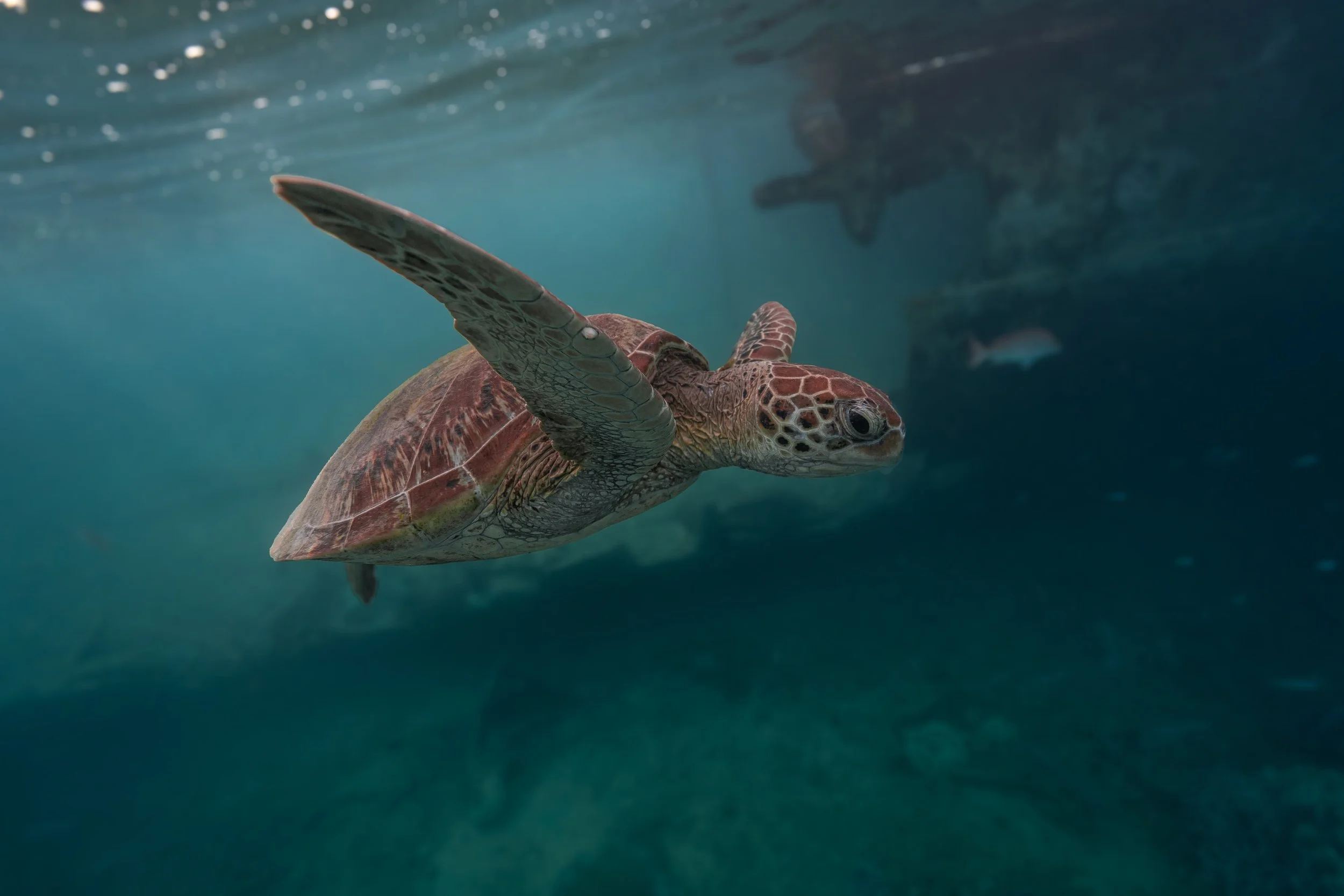Whale Lovers Series: A Conversation with Oscar Trisley
Growing up by the ocean in Byron Bay, I had a natural connection to the sea. But my journey into underwater photography truly began as a young teen when I discovered freediving. Freediving opened up a whole new world for me—one where I felt completely immersed in nature. After school, I’d spend hours snorkelling, feeling a deep pull towards exploring more of this environment. Eventually, I saved up for my first underwater camera system, and documenting what I saw beneath the waves became a way to bring others along on my journey. Over time, I also started experimenting with drones, which allowed me to capture breathtaking aerial shots of the ocean, especially humpback whales during their annual migration along Australia’s east coast. Photography, both underwater and aerial, has given me a way to show the beauty and complexity of the ocean and its inhabitants, particularly whales, and to share a message of respect and conservation with others.
Favourite Whale Encounter
One of my most unforgettable moments was observing a young humpback calf who seemed completely lost in play—spinning around, opening its mouth wide, and moving with such freedom and curiosity. Watching this calf felt like witnessing pure joy, a creature so full of life, almost like it had no cares in the world. It’s encounters like these that highlight the innocence and intelligence of these animals. Capturing that moment was a reminder of how important it is to protect these creatures, who are not just awe-inspiring but also deeply connected to the health of our oceans.
The Importance of Conservation
Whales play a crucial role in maintaining the health of our oceans. By helping to regulate the food chain and contributing nutrients that support marine life, they have a massive impact on the ecosystem’s balance. Through my photography, I’ve seen how images can inspire people to connect with and care for these creatures. Thankfully, I’ve noticed that there’s growing awareness around the importance of protecting whale habitats. More people, especially younger generations, are interested in learning about the issues, from plastic pollution to climate change, that affect whale populations. I think we’re at a point where conservation is becoming a priority for many, and that shift is encouraging.
Capturing the Ocean
Whales are unlike any other animals—they’re ancient and enormous, yet gentle and deeply social. Their sheer size contrasts with their graceful, fluid movements. But they are also incredibly intelligent, communicating through songs that can travel over vast distances. Through my lens, I try to capture this raw scale, their movement, and the unique personalities each one displays. By focusing on their eyes, their movements, and the way they interact with their surroundings, I aim to give viewers a chance to connect with them on an emotional level. My goal is to showcase both their majesty and their vulnerability, to inspire a sense of responsibility for their protection.
Ethical Whale Tourism
My main advice is to be selective about the operators you choose. Look for those who genuinely prioritise whale welfare, abiding by local distance regulations, and offering respectful, minimally invasive experiences. I would also recommend eco-certified operators, who often focus more on providing educational insights than simply getting as close as possible. These companies understand that maintaining a natural environment around the whales is key to a positive experience for both humans and animals. Whale tourism, when done responsibly, can be an incredible way to appreciate these animals without disrupting their lives.
Your Conservation Efforts
I’m passionate about efforts to stop illegal whaling and to protect whale habitats from industrial activities that threaten them. Organisations like the Captain Paul Watson Foundation are making huge strides in combating illegal whaling, in Australia, groups like Greenpeace and the Australian Marine Conservation Society have successfully prevented some of the most dangerous seismic blasting proposals. Seismic blasting is incredibly harmful, producing sound intensities that are over a million times more intense than a whale’s natural calls, which can deafen and even kill marine life. These are the kinds of issues we need to be more vocal about, as they threaten not just whales but entire marine ecosystems.
Inspiring the Next Generation
You don’t need to be a scientist or photographer to make a difference in ocean conservation. Supporting this cause doesn’t mean you need to follow a specific career path—what matters most is working in a field that you’re passionate about, as that’s where you’ll have the greatest impact. Small efforts, like reducing plastic use, supporting sustainable seafood choices, or donating time or money to local conservation organisations, all add up. Education is also crucial. The more you learn about the ocean and its ecosystems, the more empowered you become to make choices that benefit marine life. Start small, find what resonates with you, and remember that every contribution counts.
How You Can Help
One of the most impactful actions is to support policies and organisations that protect marine habitats and push back against harmful practices like seismic blasting. Seismic blasting, used to locate oil and gas deposits underwater, produces sound waves that are over a million times more intense than a whale’s natural calls. This continuous noise can disorient, deafen, and even kill marine animals, including whales, over significant distances. Supporting groups that oppose these harmful practices and raise awareness about them is essential to safeguarding whale populations. Whether through financial support, advocacy, or simply sharing this information, people can help drive positive change for whales and the ocean.



